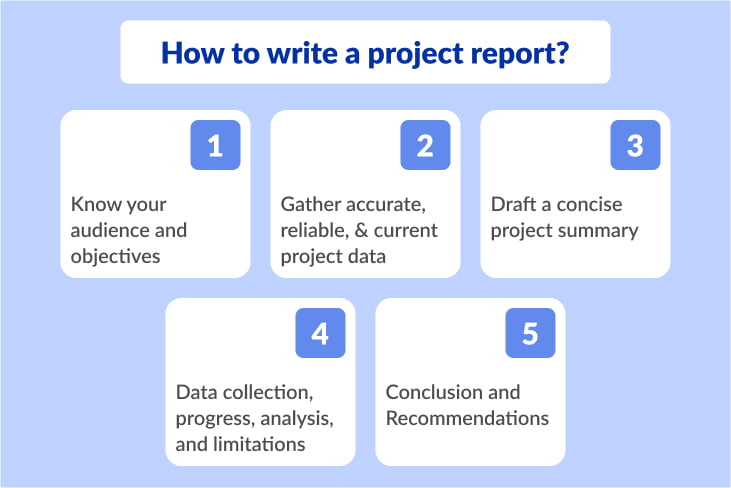What must a project report include?
This will vary according to the person you are preparing the report for. Regardless of who is reading the project report, there are a few essential components to cover for the project’s development.
- Summary: A summary is a good place to start if you’re unsure about how to create a report. Without requiring the reader to read every detail of the project, concise summaries give them key insights from the report. Summaries are a great resource for anyone who wants to quickly see the overall direction of a project without having to sift through a ton of information.
- Project Progress: Real metrics are used to measure the project’s growth in the report. This highlights possible dangers and problems as well as gives a general update on the project’s finances and status. Project managers may make changes and receive feedback thanks to this data-driven strategy.
- Available Resources: All the resources you have included in your project plan should be documented. What remains available for purchase from you? What have you tried and found not to be enough? What resources are you in more need of? In addition to staffing, this can also involve project management tools and tangible materials like software or PDFs.
- Timeline: In these status updates, it’s critical to provide an overview of your project timeframes to all parties involved, particularly those who are not utilizing the project management software you are employing. Be practical rather than idealistic with your timelines at this stage. To motivate your project team to perform more productively and fulfill deadlines, save your enthusiasm for team meetings. In the reporting section, you must be truthful about your schedule and deliverables, including the targets you have met and those you anticipate meeting on schedule or not.
How to write a project report?

What is the project report format? Below are the steps that will help you to create error-free and understandable reports.
- Prior to writing a report, you should be aware of the audience you are addressing and be aware of the report’s goal. This will direct your report’s content, company, and approach.
- You must compile essential project information. Ensure that the data you have is correct, dependable, and current. Arrange the material that has been obtained in a methodical and coherent way.
- Write the project summary that should give a quick intro to the report. It comprises the goals and objectives of the project, its scope, a timeline, the issues it seeks to solve, and the approaches it will take to get there.
- In the body, include details like data collection, progress, analysis, and limitations.
- Lastly, determine areas that need improvement, offer solutions, or recommend directions for further research based on your findings and analysis.
Project Report Format Templates
Below are the project format templates that you can use to make reports quickly.
- Daily Project Status Report Template: Using this template, you can inform your clients and team on the status of your project on a daily basis. This customizable report, which is intended to present comprehensive, daily project data, keeps everyone updated on the project’s daily status. The form also has areas to record the overall status of the day and to explain any delays or issues.
- Weekly Status Report Template: Absolutely, a weekly project status report serves as a vital communication tool for stakeholders involved in a project. It provides a snapshot of the project’s progress over a given period. They document achievements, milestones reached, tasks completed, and any challenges encountered during the week.
- Complete Report Template: To share your progress and outcomes use this template for reports. This report template’s eye-catching cover page will grab the reader’s attention right away. Additionally, it uses straightforward typefaces in a range of sizes to make the text easy to read.
Conclusion
Keeping stakeholders updated on the project’s status, difficulties, and successes requires writing project reports. You may produce thorough and comprehensible reports that clearly convey the project’s status by adhering to a set format and making use of templates.
An overview, project progress metrics, a list of available resources, and deadlines are just a few examples of the components that guarantee stakeholders get important information about the project’s progress.
A clear image of the project’s state and direction may also be obtained by gathering correct data and presenting it in an organized manner. You may display information effectively and professionally by using project report format templates, which further ease the report development process.

